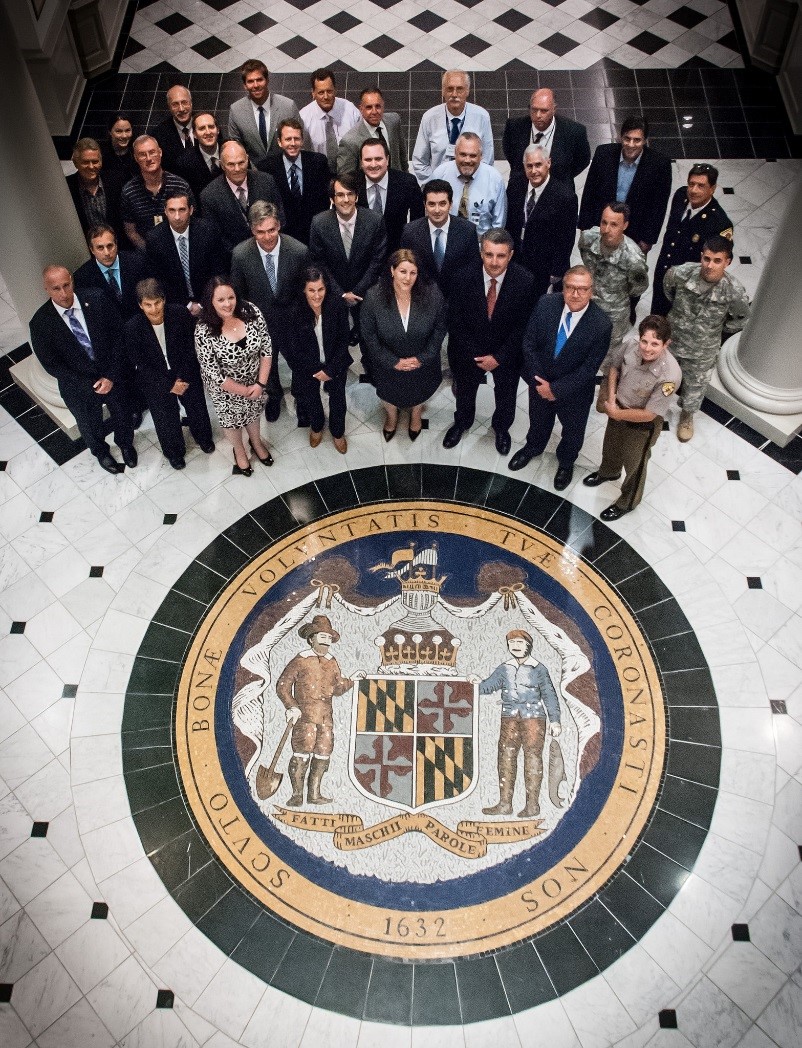Data Collection

The Maryland FirstNet Broadband team, under the direction of the Maryland State Police and the Department of Information Technology, has been working with Public Safety agencies across the State both to educate them about FirstNet and to demonstrate why the network is needed and how it will allow first responders to improve communications and perform their job more safely.
Now the effort is underway to plan for the Network’s design, both here in Maryland and across the county. The law that established FirstNet requires it to consult with each State to ensure that the Network is built to meet the needs of public safety. The more we can communicate our State’s requirements about coverage, capacity, reliability, and quality of service, the more FirstNet will understand our needs, policies, and procedures.
We believe that this collaborative process will contribute to a better Network plan, and ultimately a better Network, for Maryland’s first responders.
How we will do this
We’re asking every jurisdiction to participate and to help us get the best understanding of First Responder data usage and needs in Maryland. Using survey tools (see PSAP and PSE letters and PSE survey) that are distributed to all public safety agencies in the State we are gathering information in four main areas:
- Coverage
- Users and Operational Areas
- Capacity Planning
- Current Providers/Procurement
How we will use your data
Our goal is to use this data to develop our State network design and show our needed coverage, capacity, and potential users. You can read about our methodology here. We recognize the sensitivity of calls for service data, and we will aggregate the location to a .25 square mile grid of the State. Our analyses will also be provided to the jurisdictions. Data will not be shared or released to other parties.
We’re Here to Help
Our goal is to ensure that FirstNet in Maryland meets the needs of our First Responders, so your feedback and participation is critically important to us. Please let us know if you would like an overview of FirstNet and what it will mean for First Responders, or if you would like to answer these questions during a face-to-face meeting. Contact Lori Stone, Acting FirstNet Single Point of Contact for Maryland at lori.stone@maryland.gov or 443-622-9637.
Maryland is Leading the Pack

The Act requires that FirstNet consult with states on the design of the National Public Safety Broadband Network (NPSBN). This iterative process, often referred to simply as “consultation,” will produce a Radio Access Network Plan for deployment of the NPSBN in Maryland.
On July 29th, 2014 Maryland became the first state to begin the formal consultation process. You can read more about that meeting on FirstNet's blog.
This initial consultation meeting brought together senior FirstNet leadership and Maryland public safety, I/T, and executive leaders (pictured at left). The MDInterop Team has prepared 13 suggestions/lessons learned to help other states prepare for consultation.
Maryland will build on this initial meeting, collecting user requirements, continuing to exchange ideas, requirements, and design proposals with FirstNet as the consultation process continues.
Governance

The MDInterop Team had a number of early outreach successes by leveraging our strong State and regional public safety communications governance bodies.
Maryland's Statewide Interoperable Executive Committee (SIEC)
Maryland formally established its Statewide Interoperability Executive Committee (SIEC) along with its Practitioner Steering Committee (PSC) on July 10, 2008. Executive Order (PDF: Executive Order.pdf). The Superintendent of the Maryland State Police chairs the SIEC. The SIEC is comprised of senior elected and appointed officials from State, county, and municipal governments who are appointed by the Governor for up to two two-year terms. Public safety unions and associations, such as the Maryland State Fireman’s Association, the Maryland Chiefs of Police, and the Maryland Association of Counties, are also appointed by the Governor to represent their members. Ex officio members serve as the heads of their departments.
The SIEC is responsible for the Statewide Communications Interoperability Plan (SCIP) which is updated annually with the Program Management Office (PMO) staff. The SIEC is also responsible the deployment, usage, and coordination of the State 700 MHz Frequencies as dictated by the Federal Communications Commission. Decisions from the SIEC are implemented through the position of Statewide Interoperability Director (Maryland’s SWIC) who is responsible for the Interoperable Communications programs within the State.
Regional Interoperability Governance Bodies

The State of Maryland is organized into five interoperability regions as shown on the map below. Each region has established a governance structure and charter to oversee the development of interoperable communications. Each region nominates a member to serve as a voting member of the SIEC and on the PSC, which reports to the SIEC. The SIEC gives much weight to the input, recommendations, and counsel from these regional representatives, as they are the radio system managers and public safety communications practitioners in the field.
Western Interoperability Region - Washington, Allegany and Garrett Interoperability Network (WAGIN)
The Maryland counties of Washington, Allegany and Garrett, in partnership with the State of Maryland, have built a three-county radio interoperability network connecting their public safety mobile radio systems and linking with the radio systems of three state agencies. The federally funded new system, known as the Washington-Allegany-Garrett Interoperability Network (WAGIN) was made operational November of 2010. The WAGIN system was built utilizing IP Interoperability and Collaboration System (IPICS) technology from CISCO Systems. This system accommodates physical radio connections, ersonal computers, IP phone users, and Public Switched Telephone Network (PSTN) connections. The WAGIN open standards-based system is consistent with the Maryland SCIP.
The NCR Interoperability Region: Prince George’s, Montgomery, and Frederick Counties
In 2005, the NCR Interoperability Program (NCRIP), a regional initiative, was established to create digital networks and systems interoperability for public safety and emergency response. As part of this effort, a project was established to interconnect the institutional networks of the NCR governments called NCRnet. NCRnet is intended to provide a survivable infrastructure linking Maryland, Virginia and DC NCR jurisdictions together for the benefit of first responders both in regional emergencies and in routine operations. The NCRnet project will provide network infrastructure necessary to allow secure, non-commercial, government-controlled access to critical regional communications systems and to facilitate real time, inter-regional, and cross-ESF communications. This infrastructure will allow the Emergency Support Functions (ESFs) to succeed in their mission of building and sustaining an integrated effort to prepare for, prevent, protect against, respond to, and recover from all-hazards, threats or events. Prince George’s County in Maryland is the lead agency for this project and Montgomery and Frederick Counties are participants along with the cities of Gaithersburg, Rockville, College Park, and Greenbelt.
Northern Interoperability Region - Central Maryland Area Radio Communications (CMARC)
After the terrorist attack on the United States on September 1, 2001, a comprehensive review of security vulnerabilities was launched by public safety personnel in Central Maryland. Wireless radio interoperability, between public safety personnel in local jurisdictions and those working for the State and Federal governments was identified as one of the biggest vulnerability gaps. This gap was consistent with findings of national commissions that reviewed the 9/11 attack. As a result, funding to correct this problem was provided through various grants administered by the U.S. Departments of Justice and Homeland Security. The Central Maryland region was identified for special homeland security funding via Urban Area Security Initiative (UASI) grants. The Baltimore Urban Area Working Group, a committee of public safety leaders under the direction of elected leadership who were members of the Baltimore Metropolitan Council, was formed and immediately directed the establishment of a sub-committee to address vulnerabilities related to wireless radio interoperability.
The Baltimore Urban Area Working Group (BUAWG) By-Laws provide the specific governance structure that oversees interoperable communications policy. The Baltimore Metropolitan Council Executive Group, the BUAWG, and the Central Maryland Area Radio Communications (CMARC) Oversight Committee work in tandem to address wireless radio interoperability issues in Central Maryland. CMARC, a standing committee as defined by Article V of the By-laws for the Baltimore Urban Area Working Group is responsible for developing, overseeing and implementing the solutions to wireless radio interoperability issues on behalf of the BUAWG.
Southern Interoperability Region - Southern Maryland Interoperable Executive Committee (SMIEC)
The three counties in Southern Maryland -- Calvert, Charles, and St. Mary's - have established a Regional Governance Structure that has been formally approved in the form of Articles signed by all three Boards of County Commissioners. Each County appoints three members to the Executive Governance Group. The composition includes: a member of the County Commissioners or another elected or appointed official of the County; the Public Safety or Emergency Services Director of the County; and a citizen of the County appointed by the Commissioners. There is a Practitioner Steering Committee comprised of up to five members from each County that are appointed by the Executive Governance Group. The mission of the SMIEC is to promote public safety Communications and interoperability program. The Committee meets to manage and advise on projects, issues, and funding sources dealing with interoperability in the region and State. The SMIEC has overseen regional drills and is now overseeing the process of the build-out of the National Mutual Aid radio systems in the Southern Maryland region, which will enhance regional interoperability.
Eastern Interoperability Region – Eastern Shore Communications Alliance (ESCA)
ESCA is comprised of the directors of emergency services from every county on the Eastern Shore and Ocean City. ESCA is a cooperative alliance that serves as the Shore’s interoperability governance body. ESCA meets regularly to discuss interoperability and other issues facing public safety answering points and emergency managers on the Shore. ESCA coordinates interoperability trainings and exercises, as well as drafts and maintains regional standard operating procedures and Tactical Interoperable Communications Plans. ESCA manages the Maryland Eastern Shore Interoperability Network (MESIN), the Shore’s primary technical interoperability solution. As a group, ESCA sets regional interoperability policy, and works with State and federal partners on interoperability issues.